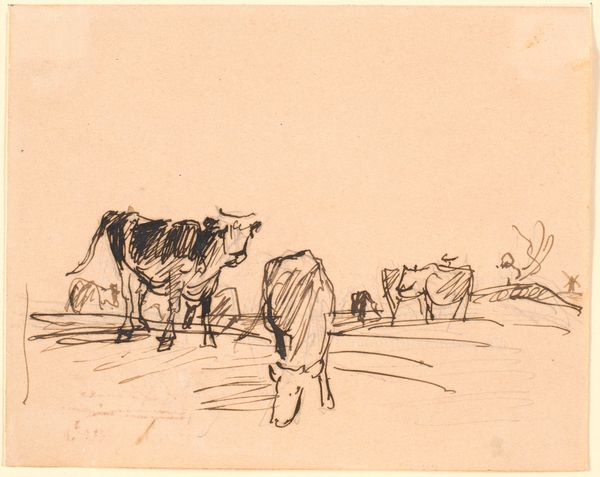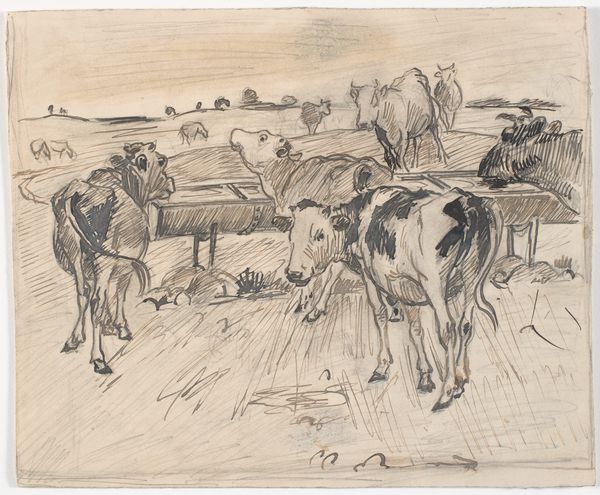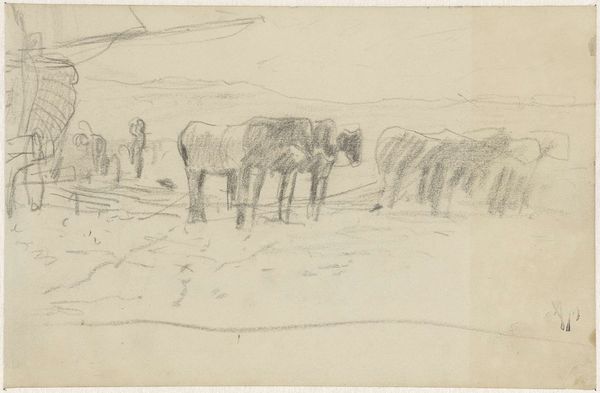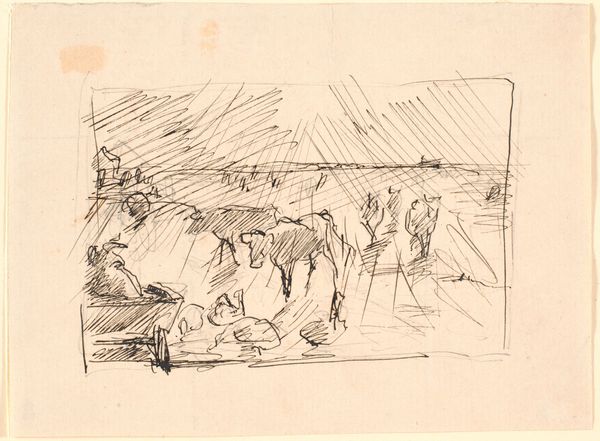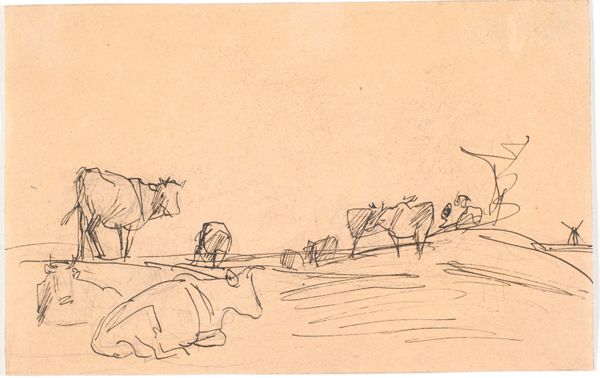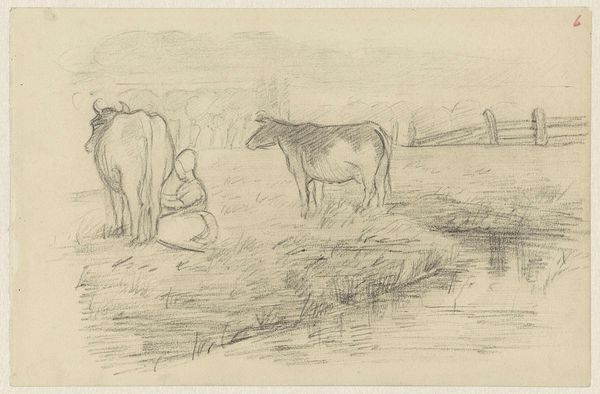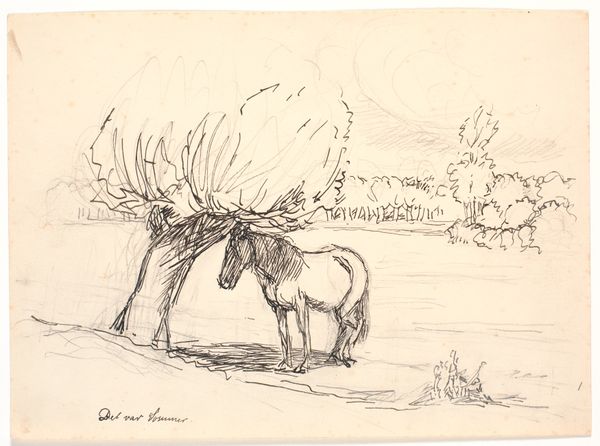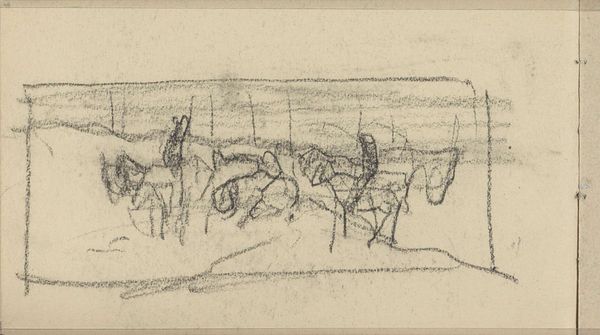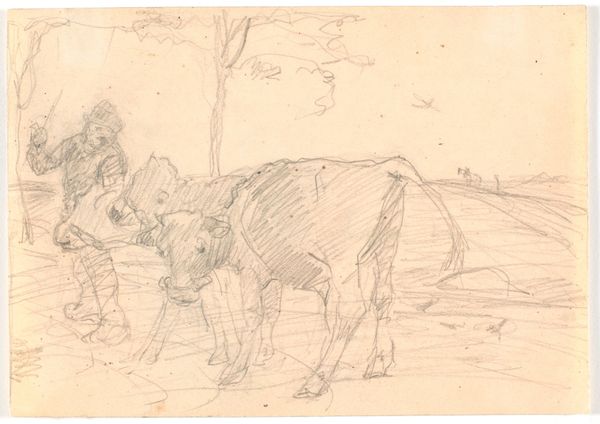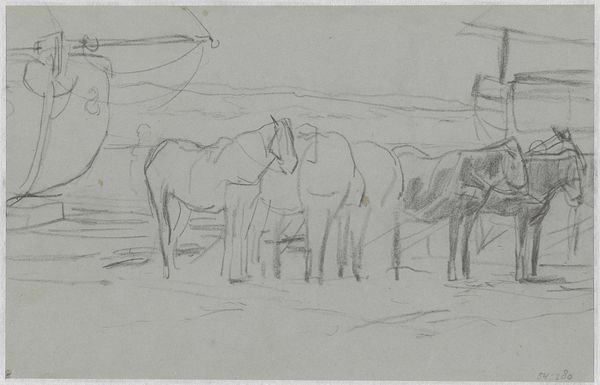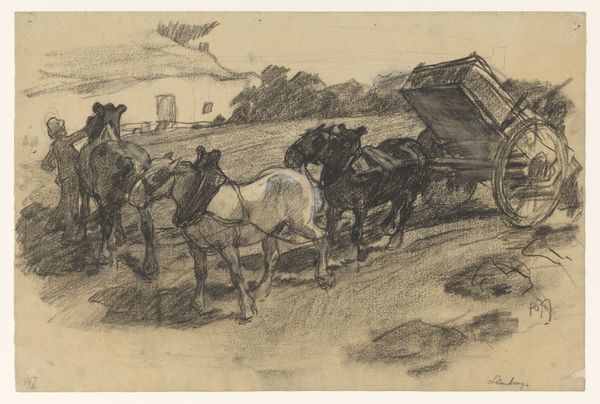
drawing, paper, pencil, chalk
#
drawing
#
animal
#
impressionism
#
landscape
#
figuration
#
paper
#
personal sketchbook
#
pencil
#
chalk
#
realism
Copyright: Public Domain
Curator: Welcome. Today, we are observing “Weidende Pferde in Rzeczyca, Russisch-Polen” (Grazing Horses in Rzeczyca, Russian Poland) a drawing here at the Städel Museum created with pencil and chalk. The artist is Reinhard Pfaehler von Othegraven. Editor: Immediately, the light and fleeting quality grabs me. You can practically feel the movement of the animals and the simplicity of the scene suggests it was sketched quickly in place, en plein air as the French say. The materiality emphasizes its nature as a record of life, light, and activity. Curator: Exactly! Sketches such as this served not only as preliminary studies but also as cultural documents. The image of grazing horses, deeply rooted in agrarian life, speaks to themes of freedom, nature, and perhaps even a yearning for a simpler existence. This also has significance related to travel art during the Imperial era. Editor: Interesting point. Given the locale mentioned in the title and the choice of readily available materials like chalk and pencil, it seems that the artist wanted to directly engage with that place. The artist's use of cross-hatching also evokes a sense of depth using minimal materials. Curator: Consider too, the placement of these horses in relation to the land. Their hunched figures almost blend into the plains, which could be read as representative of both their domestication and place in the ecosystem, a sign of pastoral symbiosis. It brings a symbolic understanding between culture and labor in an artistic setting. Editor: I am seeing an underlayer too. It also highlights the artist's skills, rendering these animals with such efficiency, while hinting at their mass and form with simple applications. This seems to indicate it's from a personal sketchbook where he perfected his technique to portray the nature in its surroundings. Curator: Very true. Ultimately, I feel this piece is not only a display of technical skill, but is rooted deeply within human interpretations of space and interaction with nature, capturing a distinct place at a specific historical moment. Editor: Absolutely. And understanding how the medium informs both the approach and impact certainly provides a whole new layer of appreciation. Thank you!
Comments
No comments
Be the first to comment and join the conversation on the ultimate creative platform.
